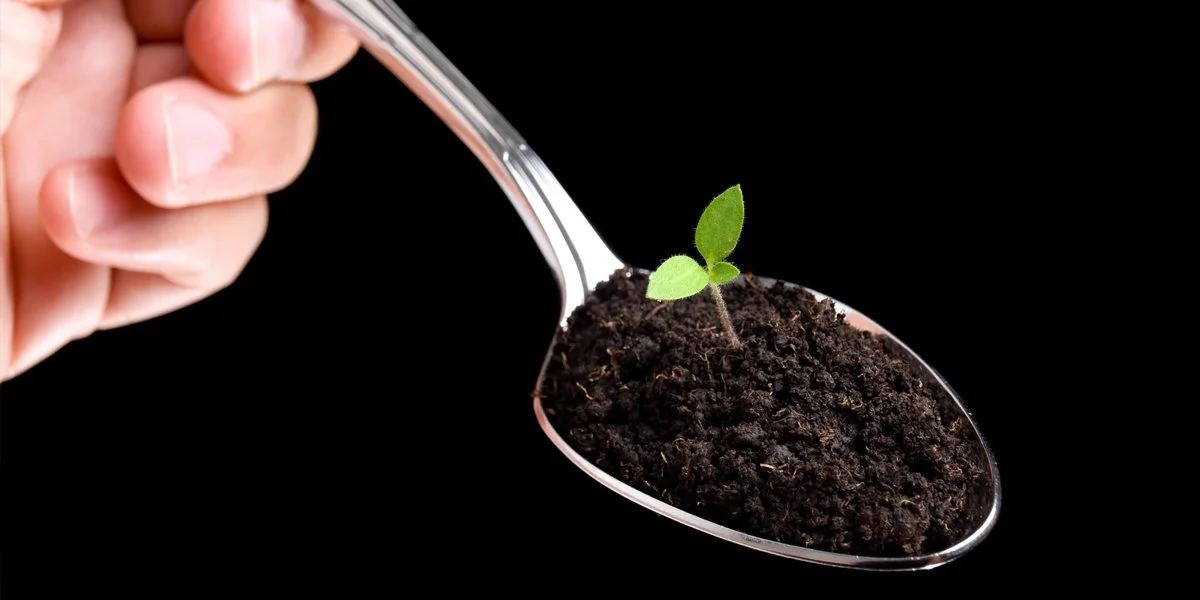Is Eating Clay Good for You?
As dirty as dirt-eating may sound, this article is not going to be touting the benefits of just any type of dirt. Let me tell you right from the start that grabbing a spoonful of dirt from your backyard is ill-advised. Also, forget about munching on the grime that collects in the dark corners of your home floor between the baseboards. No, the subject that I am writing upon has to do with consuming a very special type of dirt called clay.
This is the part where you might shake your head and say, “you mean clay, like play-doh?”.
No, not at all. Because as odd as it sounds, the practice of eating clay has been recorded in medical books for thousands of years. In fact, the benefits of consuming clay have been hailed by physicians as far back as Galen and Hippocrates.
There was a meta-analysis published in the Quarterly Review of Biology which does a really nice job in helping to shed light on the history of eating clay [Sera Young et al., "Why on Earth?: Evaluating Hypotheses about the Physiological Functions of Human Geophagy"]. In this publication, researchers collected more than 480 reports from missionaries, doctors, explorers, and anthropologists. The findings suggested that while dirt didn’t offer too much nutritional benefit, it did serve to protect against toxins, pathogens, and parasites.
Geophagy is a Long-Complicated Word
In the medical vernacular, the subject of clay eating is referred to as geophagy, which is the practice of eating earth. This can include any type of earth such as clay, chalk, or even mounds of dirt where termites live.
In my original book on the subject matter, The Clay Cure, I wrote that over 200 cultures worldwide currently consume clay on a daily basis. That’s a lot of people who bite the dust!
Most recently, thanks to the advancements in medical science and technology, we’re seeing new scientific evidence that validates the oral health benefits of certain types of clay. It is encouraging to see that so many independent clinical trials have confirmed what humans and animals eating clay have experienced over two millennia.
What is Clay and isn’t it just a Rock?
One of my favorite classes in university was geological sciences. I was so excited to learn about rocks, their mineral structures, and the traits that differentiate them from one another. Little did I know that shortly after taking that course, I would turn to clay for its health properties!
Sitting in that class, I remember learning the fact that clays are the smallest particles in rocks. It’s easy to look at clay and think it’s just some plain old rock. But this is not the case. When I talk about clay minerals, I am referring to a group of clays with similar physical layer structures. It is impossible to see those structures with the naked eye, but you can see how they look under a strong microscope. It is the structure of the clay mineral itself that gives us an understanding of what is its therapeutic effect.
This includes detoxification, mineral supplementation, treatment for gastrointestinal disturbances, and more. This is not the case for the regular, old inert rocks sitting in one’s front yard.
Not All Clay is Created Equal
Some clays confer health benefits, others do not. Montmorillonite clay, which was originally discovered in Montmorillon, France has been studied in clinical trials for its well-recognized detoxification effects in the body; this includes both humans and animals. Yet, Kaolinite clay, which has a completely different mineral structure, has been studied and promoted for its use as an astringent in the treatment of diarrhea. Just because it’s clay or earth, doesn’t mean it is all the same!
Clinical Studies Involving Edible Clay
There are a number of clinical studies that you can refer to in order to learn more about clay’s therapeutic benefits. A visit to PubMed will allow you to read a collection of different trials conducted in both humans and animal subjects.
My book, Healing with Clay, due out in Feb/March 2022, explains why people all over the world eat clay and summarizes some of the clinical studies so the reader can develop a more critical understanding of this natural supplement.
Do You Want to Bite the Dust?
Clay is easy to take. Just one teaspoon per day with 4 oz of water on an empty stomach. Check out the product Detox Dirt founded by the author, Ran Knishinsky. He has been an avid dirt eater for over 30 years.
About the Author: Ran Knishinsky eats clay on a daily basis. When he's not eating dirt, he is the author of 4 books published in 5 languages. Ran is the founder of Detox Dirt, an edible montmorillonite clay. Ran has been over 15 years in both the naturopathic and allopathic medicine industries. He first owned a Homeopathic Dispensary and Health Food Store. Later he worked in the Hospital, Med Device, and Pharmaceutical sectors as a Management Consultant and Marketing Executive where he led large-scale commercial efforts for high-profile drugs at publicly traded companies. Ran holds a Master of Business Administration from the WP Carey School of Business at Arizona State University . Learn more about what Ran is eating at DetoxDirt.com!


